The Future of Food: Space-Based Agriculture and Food Production
As humanity continues to explore the vast reaches of outer space, the need for sustainable and efficient methods of food production becomes increasingly pressing. Space-based agriculture and food production refer to the cultivation of crops and livestock outside Earth’s atmosphere, primarily on space stations or on other celestial bodies such as Mars.
The concept is not new; NASA has been experimenting with growing plants in space since the 1980s. However, recent advancements in technology have made it possible to envision a future where we can produce our own food sustainably while exploring the cosmos.
The Importance of Addressing Environmental Challenges

Space-based agriculture faces numerous environmental challenges that must be addressed for the concept to become a viable solution. The most significant challenge is the limited resources available in space.
Unlike on Earth, water, soil, and sunlight are scarce commodities that need to be conserved carefully. Another significant challenge is waste management and recycling.
In a closed-loop system like that needed for space-based agriculture, every resource must be recycled efficiently. Waste management is crucial when growing plants in a closed environment because nutrient-rich water can build up rapidly if not appropriately managed or recycled.
There are potential health risks from radiation exposure that need mitigation when cultivating crops in space. While Earth’s atmosphere provides us with ample protection from radiation, conditions outside of it do not offer the same level of protection.
Solving these environmental challenges will pave the way for sustainable food production beyond our planet’s limits while ensuring minimal impact on our environment. In this article, we’ll explore some ways these challenges might be overcome through innovation and technological advancement.
Environmental Challenges
Limited resources in space (water, soil, sunlight)
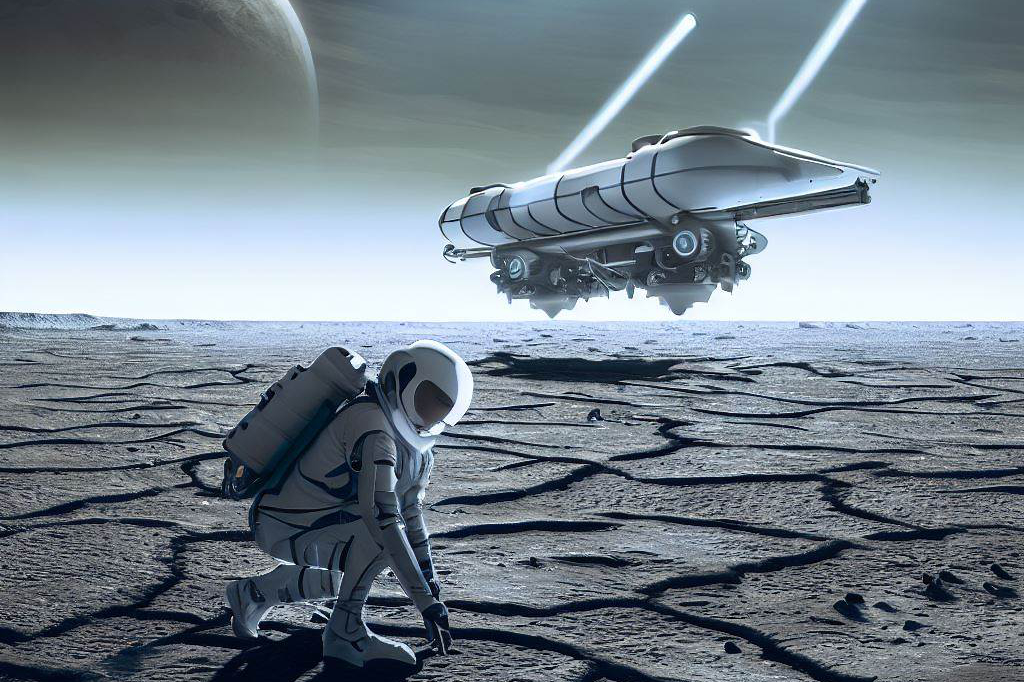
One of the biggest environmental challenges facing space-based agriculture is the limited availability of resources. Water, soil, and sunlight are all crucial elements for plant growth on Earth, but they are scarce in outer space. Here on Earth, plants can rely on natural sources of water and nutrients from the soil.
However, in a space environment where there is no soil and limited water supply, it is necessary to develop innovative solutions to ensure plant survival. Hydroponic systems have been proposed as a possible solution for growing plants in space with limited resources.
Hydroponics involves growing plants in water instead of soil and providing them with nutrient-rich solutions through irrigation systems. This allows for more efficient use of water and nutrients while also reducing waste.
Waste management and recycling
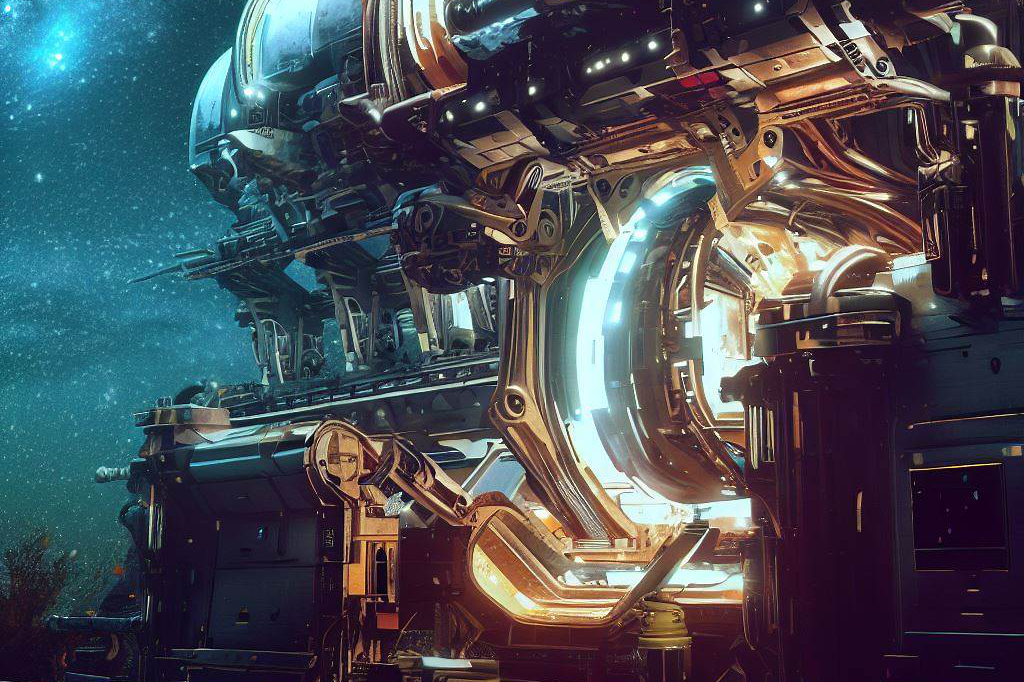
Another environmental challenge associated with space-based agriculture is waste management and recycling. In a closed-loop system where everything must be recycled or reused to minimize environmental impact, effective waste management strategies are critical.
In conventional agriculture settings on Earth, waste products can often be disposed of or used as fertilizer for future crops. However, this is not practical in the confined environment of a spacecraft or planetary colony where every resource counts.
One proposed solution is to use organic waste materials such as food scraps or plant matter to create compost that can be used as fertilizer. Another possibility is using anaerobic digestion processes that break down organic material into methane gas which can be used as fuel for energy production.
Maintaining a closed-loop system to minimize environmental impact
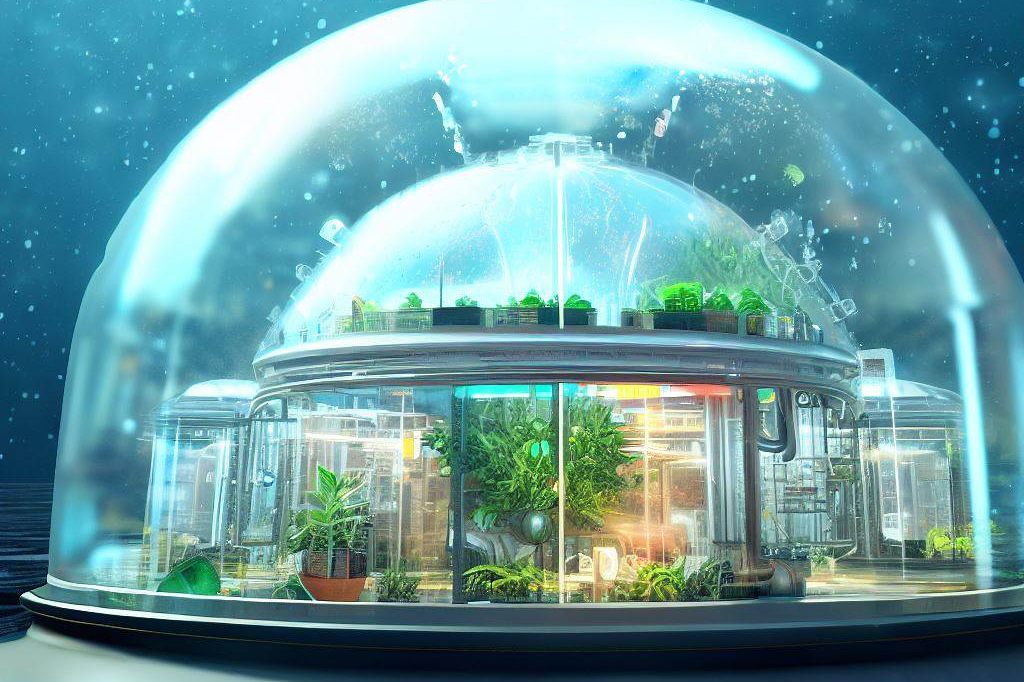
Maintaining a closed-loop system—where everything from air quality to food production to human waste management occurs within an enclosed environment—is essential for minimizing environmental impact in space-based agricultural practices. The goal is to create an ecosystem that mimics natural ecosystems found on Earth, but with the added constraints of an enclosed environment. One way to achieve this is through the use of a bioregenerative life support system (BLSS).
A BLSS integrates plants, microorganisms, and humans into a closed-loop system where waste products from one component are used as resources for another. The plants produce oxygen and food through photosynthesis while also removing carbon dioxide and pollutants from the air.
Micro-organisms break down organic waste into nutrients that can be used by plants. Humans consume the harvested crops and produce waste that is then recycled back into the system.
Mitigating potential health risks from radiation exposure

Space-based agriculture also faces potential health risks associated with radiation exposure. Cosmic rays and solar flares emit high levels of ionizing radiation that can damage human cells and DNA, leading to an increased risk of cancer or other health problems.
One possible solution is to use radiation-resistant crops that can withstand high levels of ionizing radiation without being destroyed. Researchers are currently exploring ways to create genetically modified crops with enhanced DNA repair mechanisms or protective proteins that can mitigate these risks.
Another solution is to provide shielding for both humans and plants using materials such as lead or water-based solutions. However, this option may not be practical due to its weight and size in a space environment where every gram counts.
Opportunities for Sustainability
Hydroponics and Aeroponics: Conserving Resources in Space
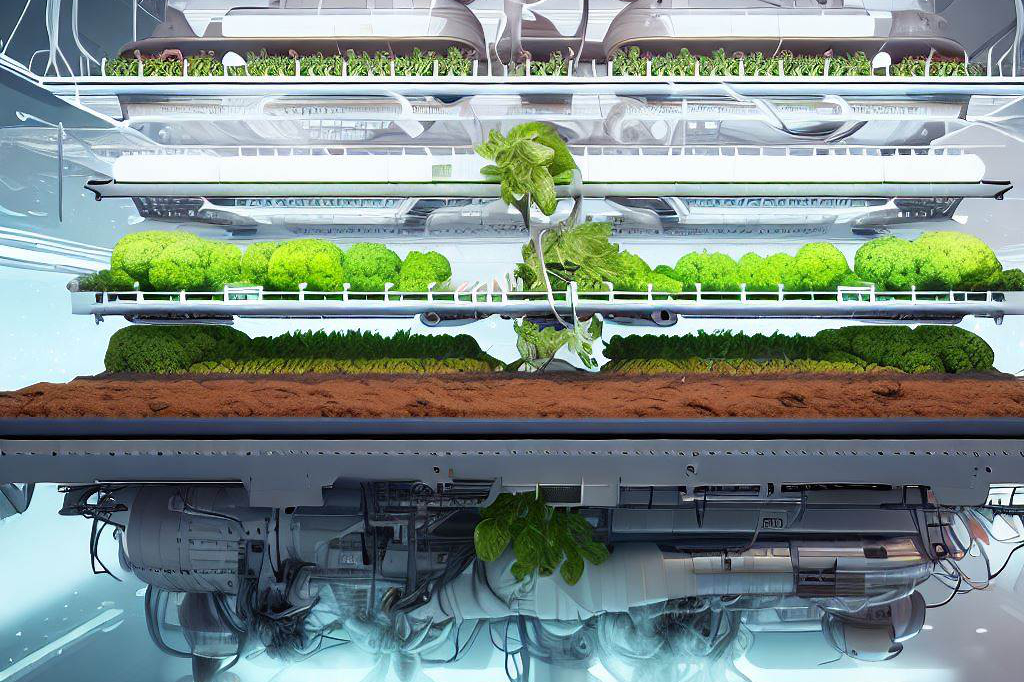
One of the biggest challenges of space-based agriculture is the scarcity of resources. Water, soil, and sunlight are all limited commodities in space, making it difficult to grow crops using traditional methods. However, advanced technologies like hydroponics and aeroponics offer a solution to this problem.
Hydroponics involves growing plants without soil by using nutrient-rich water instead. This method allows for more efficient use of water resources since the plants only absorb what they need.
Aeroponics takes it a step further by suspending plant roots in mid-air and misting them with a nutrient solution. This method uses even less water than hydroponics while still providing plants with the necessary nutrients.
Implementing these methods not only conserves water but also reduces space requirements since no soil is needed. Additionally, these methods can produce higher crop yields in a shorter amount of time than traditional farming methods.
New Methods for Waste Management and Recycling
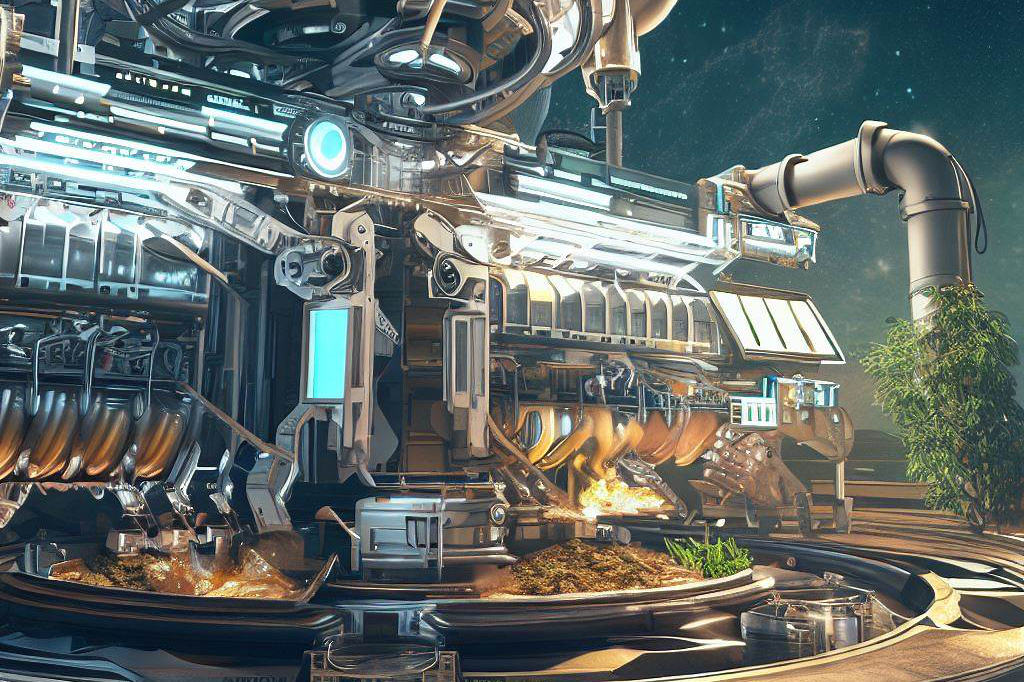
Maintaining a closed-loop system is crucial to minimizing environmental impact in space-based agriculture. Waste management and recycling play a significant role in achieving this goal. Traditional composting may not be feasible in space since it requires an ample supply of oxygen to break down organic matter.
Instead, new methods such as anaerobic digestion or pyrolysis can be used to convert waste into energy or fertilizer for plant growth. Recycling water is another important aspect of waste management in space-based agriculture.
The International Space Station currently uses a closed-loop system that recycles urine and sweat into drinking water through filtration and distillation processes. Continued research into innovative waste management systems will be essential for creating sustainable food production systems that can support long-term space missions.
Sustainable Energy Sources: Reducing Carbon Footprint
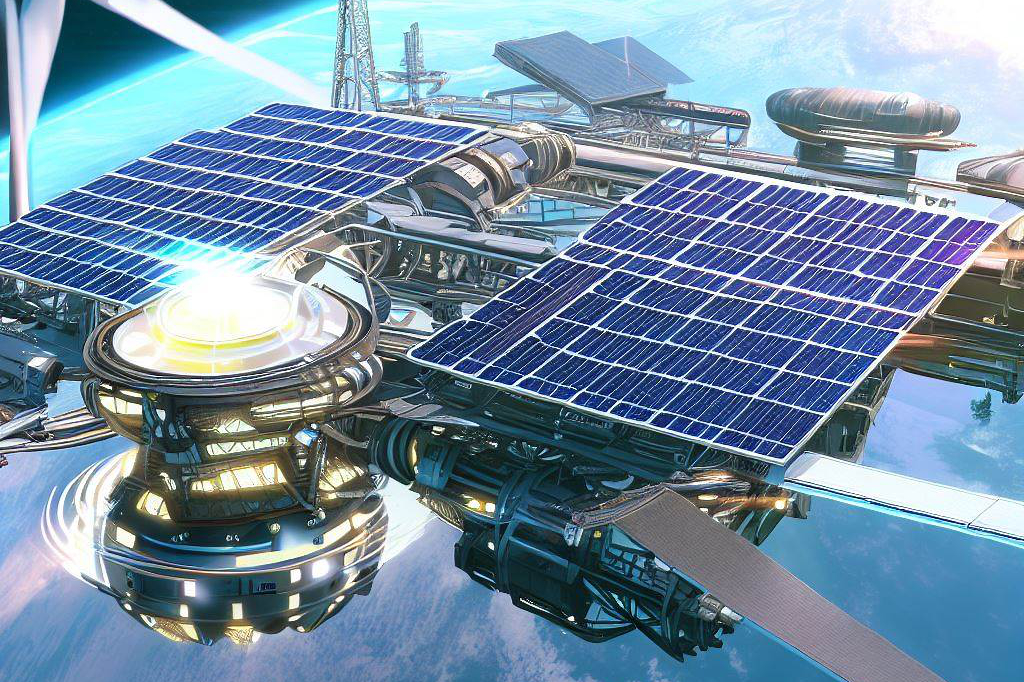
Reducing the carbon footprint of space-based agriculture is critical for long-term sustainability. One way to achieve this is by using sustainable energy sources like solar power. Solar panels can be used to power artificial lighting systems, which are necessary for growing crops in space, where sunlight is limited.
Additionally, renewable energy sources like solar power could be used to power space stations and spacecraft. Although initial costs may be high, investing in sustainable energy infrastructure can lead to significant long-term cost savings and environmental benefits.
A Self-Sufficient Ecosystem: Supporting Long-Term Space Missions
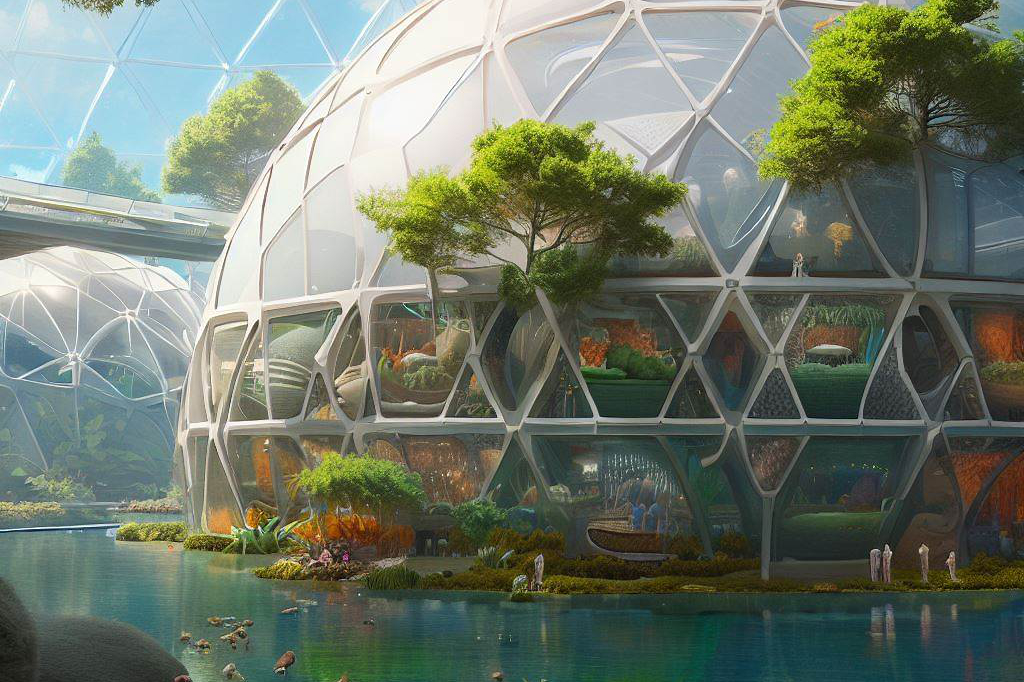
Creating a self-sufficient ecosystem that can support long-term space missions is the ultimate goal of space-based agriculture. This would involve implementing all the previously mentioned methods and creating a closed-loop system that can sustainably provide food and other resources for astronauts. A self-sufficient ecosystem would need to address all aspects of food production, including growing crops, raising animals, and producing other necessary resources like oxygen and water.
It would also require advanced technologies for waste management, recycling, and sustainable energy production. Such an ecosystem has yet to be fully realized, but continued advances in technology will bring us closer to achieving this ambitious goal.
The Role of Genetic Engineering in Space-Based Agriculture
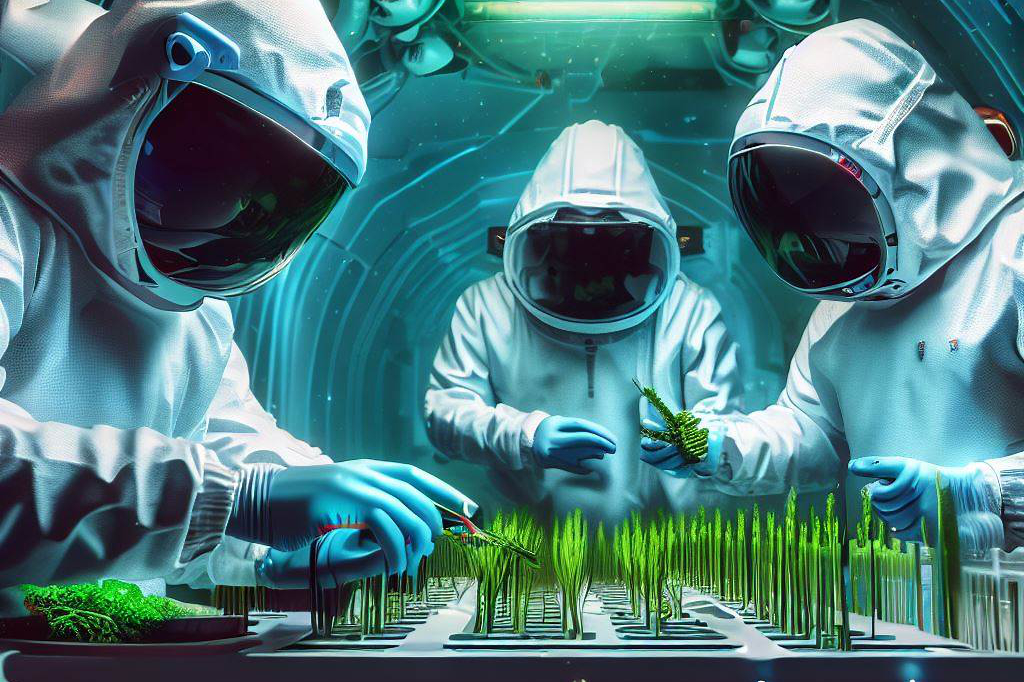
When it comes to growing food in space, genetic engineering could hold the key to making crops more resilient and adaptable. With limited resources and no room for error, it’s important to optimize every aspect of space-based agriculture.
By using genetic engineering, scientists can modify plant DNA to make them more resistant to radiation and pests, as well as more efficient at converting sunlight into energy.
One example of how genetic engineering is being used in space-based agriculture is with the creation of “space tomatoes.” These tomatoes were genetically modified by a team of scientists at the University of Florida to grow in high-salt environments, which mimic the soil on Mars.
By modifying the tomato’s genes, they were able to produce a crop that can survive and thrive even in harsh conditions. However, genetic engineering also raises ethical concerns about altering natural plant DNA.
Some worry that these modifications could have unintended consequences or be misused for commercial gain. As we continue to explore gene editing technology, it’s important to consider both the potential benefits and risks involved.
The Potential Impact of Microgravity on Plant Growth and Development

Growing plants in microgravity presents a unique challenge, as plants rely heavily on gravity for their growth and development. In zero-gravity environments like those found on spacecraft or space stations, plants experience altered gene expression patterns that can impact their overall growth and development.
For example, research has shown that plants grown in microgravity tend to exhibit increased root growth but stunted shoot growth when compared to their ground-grown counterparts. Scientists are still working to understand how these changes occur at a molecular level so they can better optimize plant growth for space-based agriculture.
Despite these challenges, researchers believe that microgravity could also offer opportunities for new discoveries in plant biology. By studying how plants adapt and respond differently under different gravitational conditions, we may be able to unlock new insights into how plants grow and develop on Earth.
The Use of Algae as a Sustainable Food Source in Space
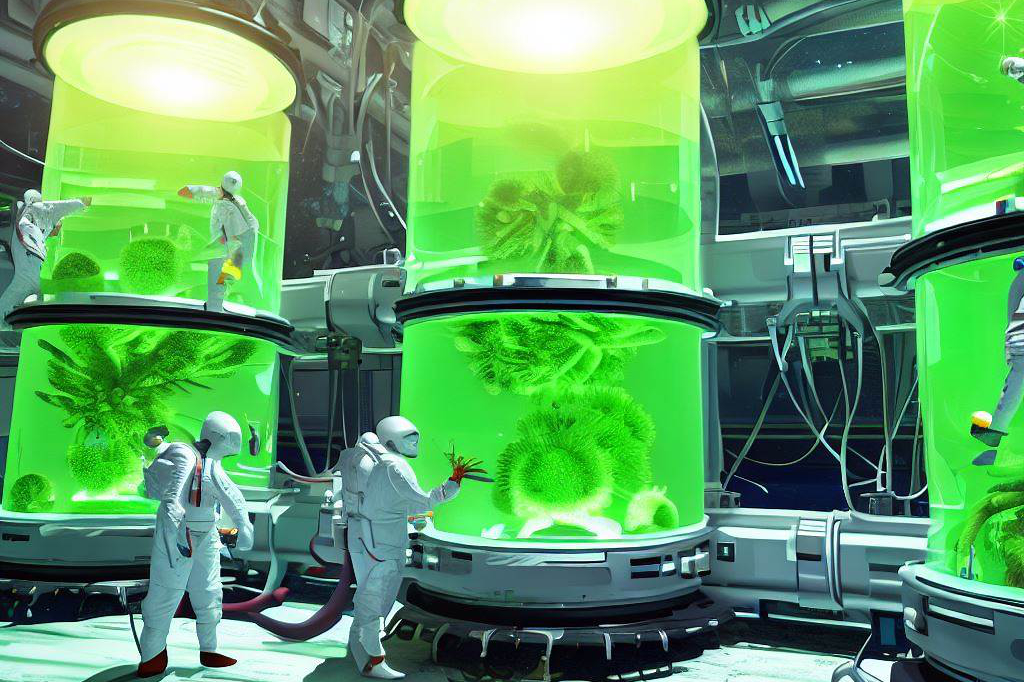
Algae may seem like an unlikely food source, but it could be a game-changer for space-based agriculture. Algae can be grown using minimal resources such as water and nutrients, making it an attractive option for space travel where resources are limited. Additionally, algae is rich in protein, vitamins, and minerals, making it a nutritious food source for astronauts.
One company leading the way in algae-based food production is NASA contractor Orbital Technologies Corporation (ORBITEC). They have developed a system called the Biomass Production System (BPS), which grows algae in reactors specifically designed for space environments.
In 2014, the BPS was successfully used to grow and harvest edible algae on the International Space Station (ISS). While there are still challenges to overcome with algae-based food production, such as taste and texture preferences, this technology shows promising potential for sustainable space-based agriculture.
Rarely Known Small Details
The importance of pollinators in closed-loop systems
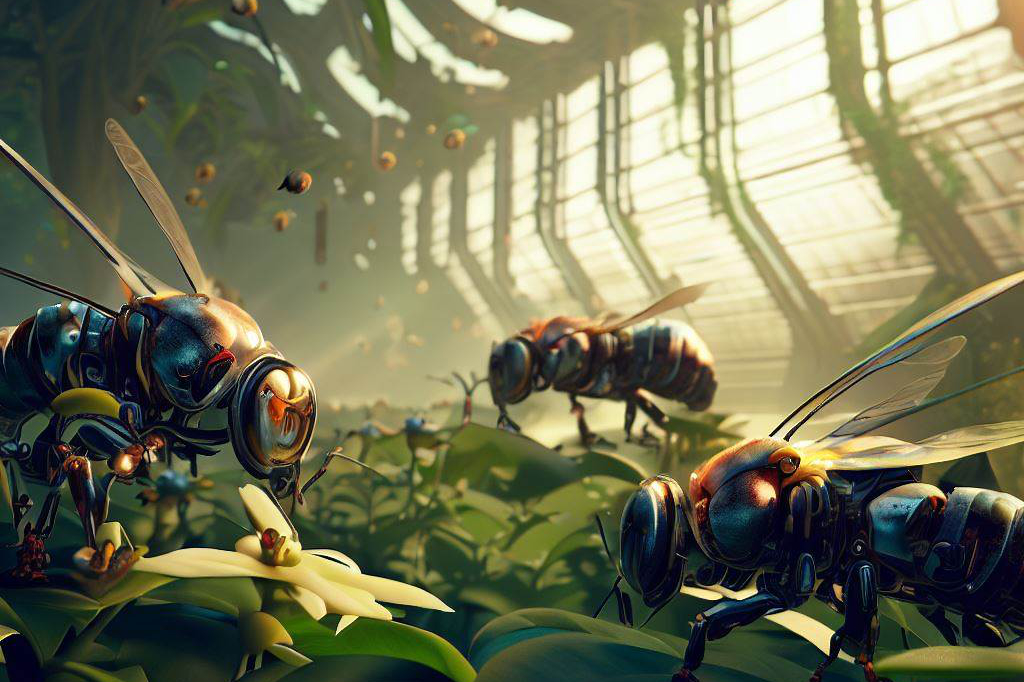
When it comes to space-based agriculture and food production, one often-overlooked factor is the role of pollinators. In a closed-loop system, where everything from water to air is recycled, pollination provides a crucial link that ensures the continued growth and productivity of crops. Bees and other insects play a key role in the pollination process on Earth, but in space, this task would fall on humans or specially designed robots.
The challenge lies in mimicking the natural process of pollination with limited resources. Methods such as electrostatic charging or mechanical agitation have been proposed as alternatives to traditional insect-driven pollination.
However, these methods are still being developed and tested for their efficacy in space environments. The importance of understanding how different crops respond to various forms of artificial pollination cannot be overstated.
How astronauts’ diets are tailored to their individual nutritional needs
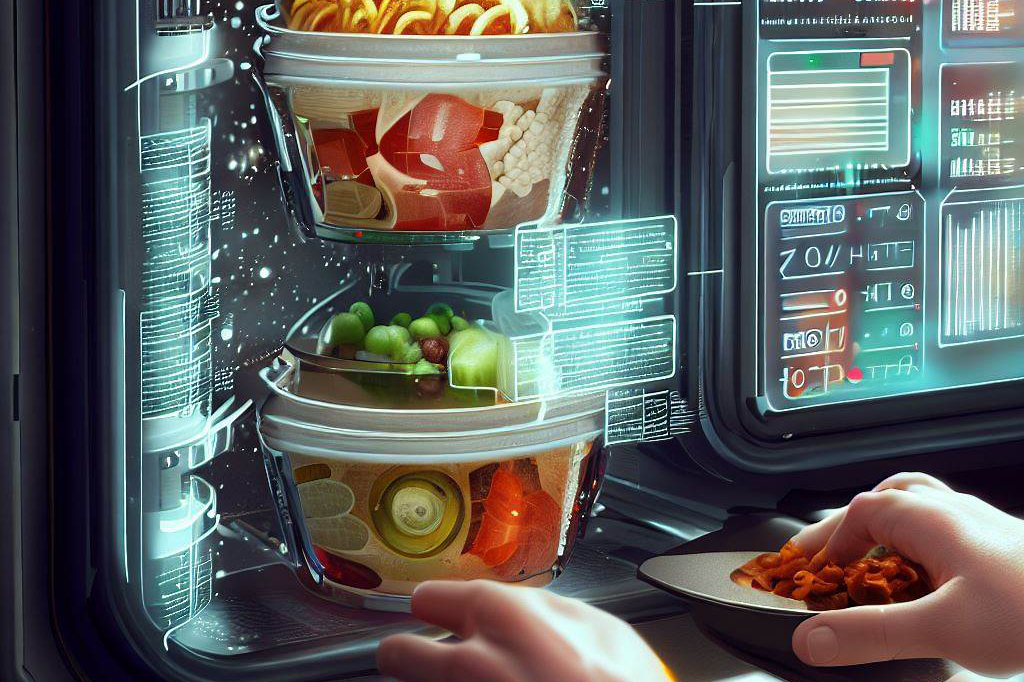
Astronauts need carefully planned diets that provide them with all the nutrients they need for optimal health while also taking into consideration their individual nutritional needs. To achieve this, NASA has created customized menus for each astronaut based on factors like age, gender, height, weight, and activity level.
These menus include foods like fruits and vegetables grown hydroponically or aeroponically on space stations or spacecraft. Interestingly enough, astronauts consume spices like salt and pepper in liquid form since they tend to float around if not contained properly while eating.
Another challenge is keeping food fresh without refrigeration – something that can be problematic during long duration missions when resupplying food from Earth becomes difficult, if not impossible. NASA tackles this problem by using high-pressure processing (HPP), which extends shelf life without compromising quality or nutrition.
The challenges of growing crops in zero gravity environments
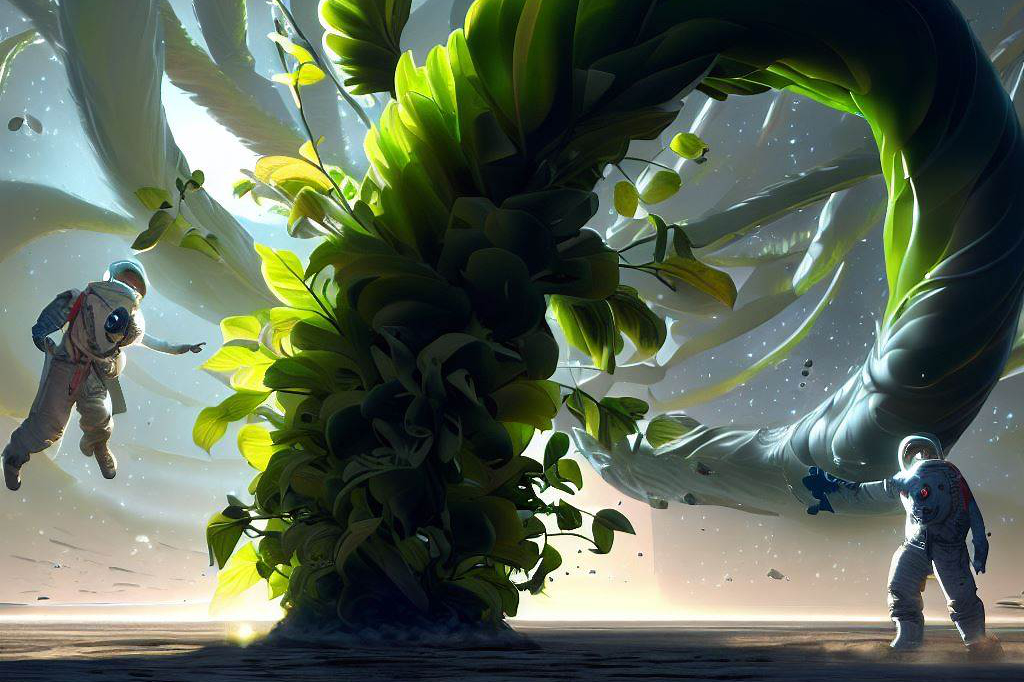
Growing crops in zero gravity environments poses a unique set of challenges. Plants grown in space need to be able to withstand harsh conditions like fluctuating temperatures, radiation exposure, and microgravity. One issue is that roots cannot rely on the pull of gravity to guide them down towards the soil.
In response, scientists have developed hydroponic systems that allow plants to grow without soil by providing nutrient-rich water solutions directly to their roots. Another challenge is ensuring adequate air circulation and oxygen levels for plant growth.
To solve this problem, NASA has developed a system called the Advanced Plant Habitat (APH), which controls temperature, humidity, light intensity, and carbon dioxide concentration in order to create an ideal growing environment for plants.
Overall, while growing crops in space can prove challenging, it is also an exciting area of research with promising potential for the long-term sustainability of space missions as well as terrestrial agriculture.
Final Thoughts
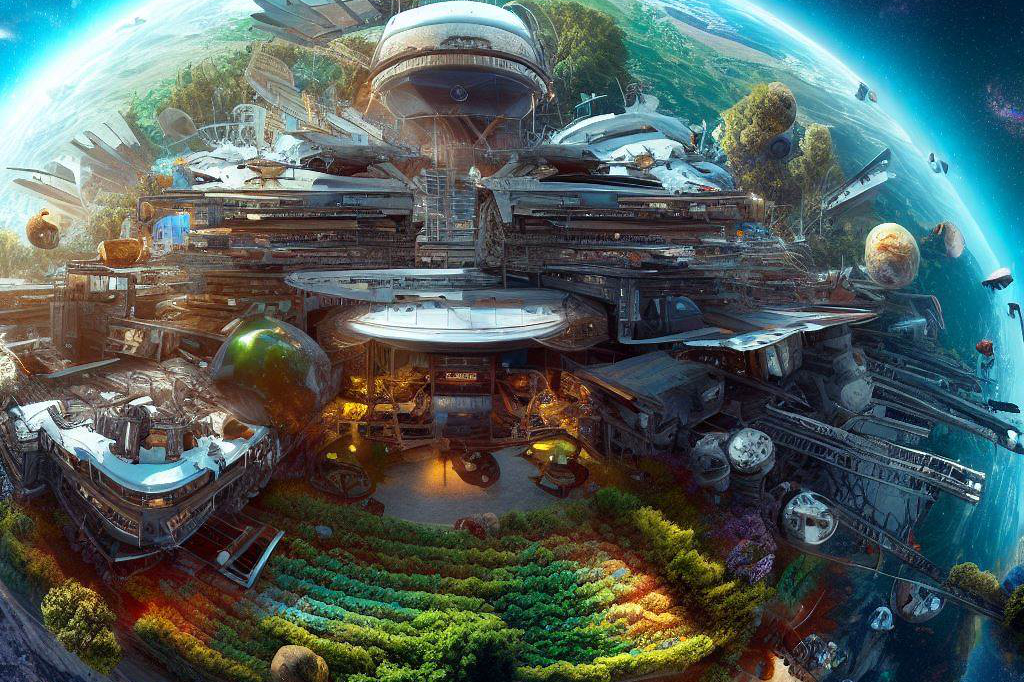
Space-based agriculture and food production is an exciting field with great potential for both sustainability and space exploration. Through the use of advanced technologies such as hydroponics, aeroponics, and sustainable energy sources like solar power, we can create a self-sufficient ecosystem that can support long-term space missions. However, there are also significant environmental challenges that must be addressed to ensure the success of this field.
One major challenge is the limited resources available in space, such as water, soil, and sunlight. This requires us to develop new methods for resource conservation and management.
Additionally, maintaining a closed-loop system to minimize environmental impact is crucial for sustainability in this field. Another challenge is mitigating potential health risks from radiation exposure.
The development of new technologies to protect crops from harmful radiation while still allowing them to receive the necessary sunlight will be crucial for success in this field. Despite these challenges, there are numerous opportunities for sustainability in space-based agriculture.
By using genetic engineering techniques, we can create crops that are better suited for growth in space environments. Additionally, the use of algae as a sustainable food source has great potential due to its ability to thrive on minimal resources.
While there are significant challenges associated with space-based agriculture and food production, there are also numerous opportunities for innovation and sustainability in this field. With continued research and development efforts, we can pave the way towards a sustainable future both on Earth and beyond.

C M, a seasoned editor, journalist, and consultant, is deeply fascinated by the convergence of technology, space, and the future of humanity.
With a particular interest in transhumanity, futurology, and the philosophical and ethical dimensions of these domains, C M serves as the lead contributor to SpaceSpotlight and TranscendSphere.
When not penning insightful articles on these rapidly evolving fields, C M indulges in their love for podcasts and books, proudly embracing their status as a ‘Happy Nerd Extraordinaire!’



